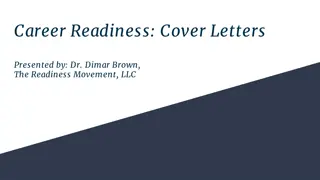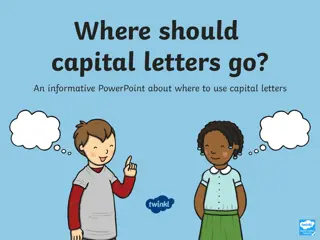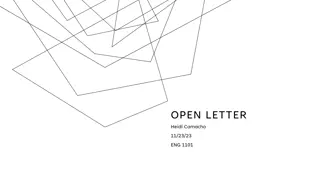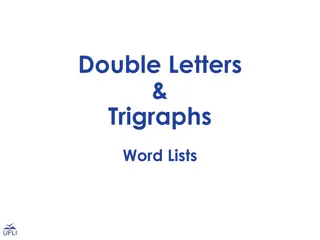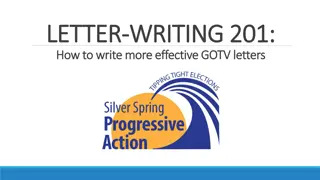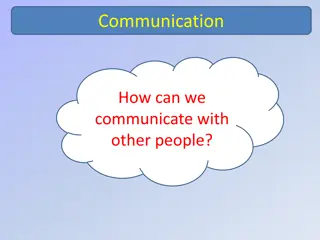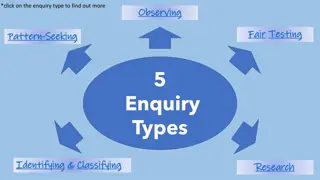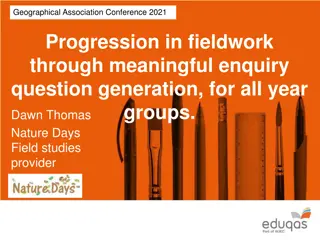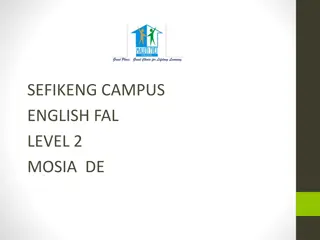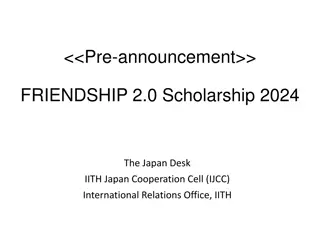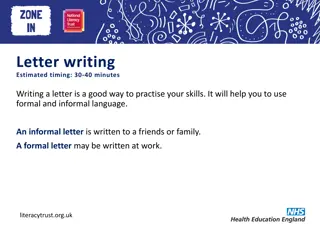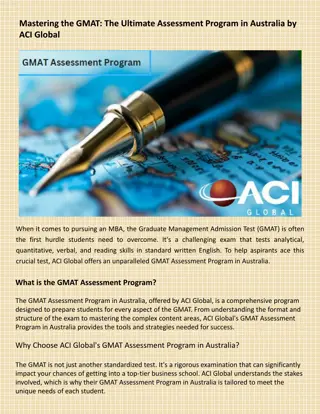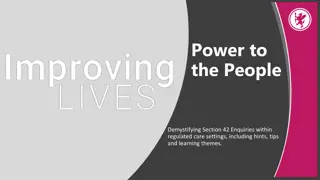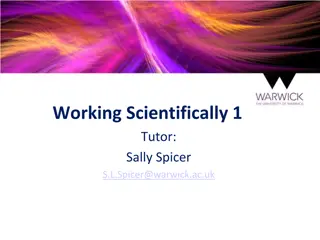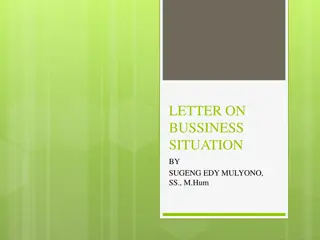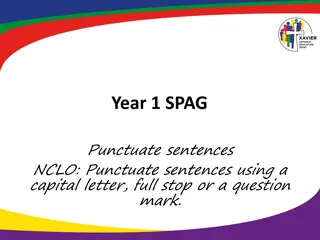
Effective Strategies for Writing Enquiry Letters
Learn about writing inquiry letters, including the types of enquiries, essential contents such as subject headings, first, second, and final paragraphs. Explore examples to understand how to structure your inquiry effectively.
Download Presentation

Please find below an Image/Link to download the presentation.
The content on the website is provided AS IS for your information and personal use only. It may not be sold, licensed, or shared on other websites without obtaining consent from the author. If you encounter any issues during the download, it is possible that the publisher has removed the file from their server.
You are allowed to download the files provided on this website for personal or commercial use, subject to the condition that they are used lawfully. All files are the property of their respective owners.
The content on the website is provided AS IS for your information and personal use only. It may not be sold, licensed, or shared on other websites without obtaining consent from the author.
E N D
Presentation Transcript
Introduction Letter of enquiry describes what the writer wants and why. The more unusual the request the more convincing the reason needs to be. The letter written for the purpose of knowing about the quality, quantity and price if the goods and the conditions of the business are known as enquiry letters. It is the foundation of business relationships.
Types of Enquiries Solicited Enquiry:An enquiry made in response to the seller s advertisement and publicity. Unsolicited Enquiry: An enquiry made on buyers own initiative. Routine Enquiry: An enquiry made by an old buyer in the usual course of business.
Contents Subject Heading First Paragraph Second Paragraph Final Paragraph
Subject Heading This should inform the reader that this is an enquiry or request e.g. Enquiry about textbooks Request for brochures Query about website
First Paragraph This should tell the reader what you want The introduction serves as the executors summary for the letter of enquiry and includes the name of your organization , the amount needed or requested and a description of the project.The Qualification of the aproject staff, a brief description of evaluate methodology and a time table are also included here.
Second Paragraph This paragraph tells the reader why you are contacting his or her organization, and gives further details of the enquiry.
Examples for Second Paragraph I saw your advertisement in HT daily on 23 October 2020 Your company was recommended to me by Mr. XYZ of KT logistics.
Final Paragraph This paragraph should contain a polite expression or an expression of thanks to the reader. The degree of politeness depends on how unusual or difficult your request is.
Final Paragraph Possible language includes Thanks I look forward to hearing from you. I am looking forward to hear from you. Thank you for your assistance. I appreciate that this is an unusual request, but I would be very grateful for any help you provide. If you think that reader might have further questions, you can suggest that he or she contact you.
Guidelines State your purpose List your questions or requested actions. Offer something in return to encourage action. Follow up with a thank you note, e-mail or phone call to the person who helped you with your request.

